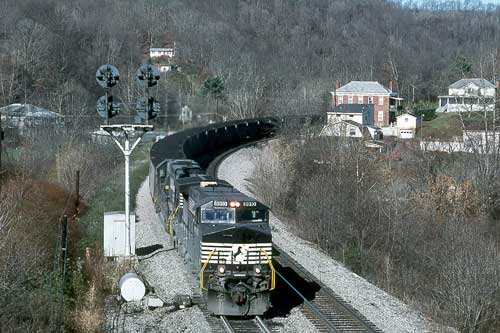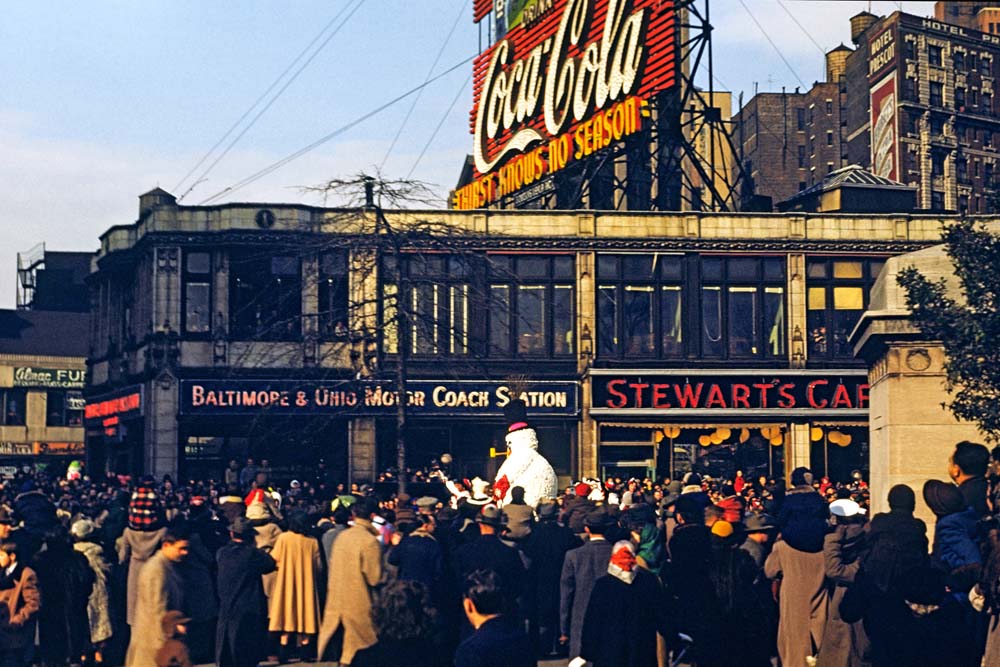Norfolk & Western, whose name dates from 1881, ran west from its namesake Virginia port to Detroit, Chicago, Des Moines, St. Louis, and Kansas City, places reached in N&W’s 1964 consolidation of its Norfolk – Cincinnati/Columbus system with the Nickel Plate and Wabash railroads.
Southern, whose first predecessor dates from 1833, blanketed the Southeast from Washington to New Orleans, and from Cincinnati, Louisville, St. Louis, and Memphis through Birmingham and Atlanta to Savannah and Jacksonville. One of the dozens of Southern’s predecessors was the original Norfolk Southern Railway, from Norfolk, Va. to Charlotte, N.C., absorbed in 1974.
On August 22, 1998, Norfolk Southern, along with CSX Transportation, purchased and divided the assets of the 10,797-mile Consolidated Rail Corporation, giving NS its long sought-after gateway to the lucrative consumer markets of the northeast United States.
Conrail had been created in 1976 as a government-owned corporation from several failed systems including Penn Central, Erie-Lackawanna, Jersey Central, Lehigh Valley, Lehigh & Hudson River, and Reading, with a mandate to rehabilitate service and operate as a for-profit firm.
In 1987, Conrail was sold to the public in what was at the time the largest initial public stock offering in U.S. history. Original shares sold for $28, netting the U.S. government over $1.6 billion.
Eleven years (and one stock split) later, NS and CSXT agreed to pay $115 per share, raising the purchase price of Conrail to $10.2 billion.
Acquiring 58% of Conrail (with the remaining 42% going to CSXT), expanded both NS’s track miles and its number of employees by 50%. NS began operating its portion of Conrail on June 1, 1999.
NS received primarily the eastern half of the old Pennsylvania Railroad, the famed “Broad Way,” as well as the former New York Central main line from Cleveland through Toledo to Chicago, and portions of the Michigan Central. In the east, NS received portions of the Erie Lackawanna as well as ex-Lehigh Valley and Reading lines used to funnel traffic from New Jersey and Philadelphia to points south and west.
The Conrail acquisition necessitated the creation of shared area operations with CSX Transportation in three regions: North Jersey, Philadelphia/South Jersey, and Detroit. NS and CSXT both operate trains into the Monongahela coal fields of southwest Pennsylvania.
Today’s 21,200-mile Norfolk Southern system serves 22 states, the District of Columbia, and the province of Ontario.
Commodities
Coal is Norfolk Southern’s largest commodity by revenue, originating from mines in Pennsylvania, West Virginia, Virginia, and Kentucky. Bituminous coal for U.S. power plants moves to customers in the Northeast and Southeast. Although in reduced quantities, NS continues to haul export coal to its storied coaling pier at Lamberts Point in Norfolk, Va.
NS intermodal traffic grew 31% after the Conrail acquisition. Key intermodal corridors are northern New Jersey, Philadelphia, and Harrisburg to Chicago and Atlanta. In addition to traditional TOFC and container traffic, NS operates the largest U.S. network of RoadRailer trains with subsidiary Triple Crown Services.
NS moves chemical and petroleum products from East Coast refineries and plants, and serves steel mills located on the Great Lakes and in the southeastern U.S. Lumber and forest products originate from mills in the Southeast.
NS serves auto parts manufacturers in the Detroit area, and operates mixing centers where trainloads of new cars and trucks can be sorted for movement to their final destinations.
Headquarters:
Norfolk Southern Corporation
Three Commercial Place
Norfolk, VA 23510-9227
(757) 629-2600
www.nscorp.com














